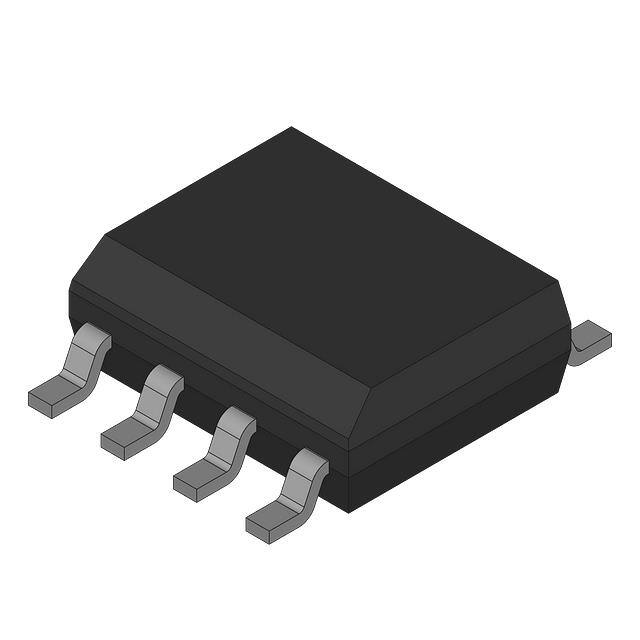Principle of noise reduction in Bluetooth headsets
In recent years, Bluetooth headsets have become a must-have in many people’s daily lives due to their portability and convenience of wireless transmission. And the noise reduction function makes Bluetooth headsets unique in noisy environments. Noise reduction technology, especially active noise reduction (ANC, Active Noise Cancellation), brings users a quieter and purer listening experience through a series of complex algorithms and electronic components.
This article will explain in detail the working principle of the noise reduction function of Bluetooth headsets, the electronic components involved, and how these components work together to achieve this function.
How Do Noise Canceling Headphones Work
1. Classification of noise reduction function
Before understanding the noise reduction function of Bluetooth headsets, we must first know that noise reduction can be divided into two main types: passive noise reduction and active noise reduction.
Passive noise reduction: Passive noise reduction mainly relies on the physical design of the earmuffs, blocking external noise through the sound insulation material of the headset. This noise reduction method is similar to plugging the ears with earplugs, which physically shields external sounds. This method does not require complex electronic circuits or additional power support.
Active noise reduction (ANC): Active noise reduction is a more complex technology that uses electronic components in Bluetooth headsets to analyze and cancel external noise in real time. It not only shields mid- and high-frequency noise, but also eliminates low-frequency noise, such as airplane engine noise or subway noise.
Active noise reduction technology relies on the collaborative work of multiple electronic components such as microphones, digital signal processors (DSPs), and speakers.
2. Working principle of active noise reduction
The core of active noise reduction technology is to eliminate noise through the principle of sound interference. Specifically, there are multiple microphones inside the headset to collect external noise signals. Then the processor reversely processes the noise signal to generate a reverse sound wave with the same amplitude but opposite phase as the noise. When these two sound waves are superimposed, they will cancel each other out due to the opposite phase, thereby achieving the effect of noise reduction.
Noise collection: Multiple microphones are usually installed on the outer shell of Bluetooth headsets. These microphones can capture the ambient noise outside the headset. The quality and quantity of microphones will affect the noise reduction effect. High-quality microphones can more accurately capture noise, especially low-frequency noise, such as traffic, the roar of machines, etc.
Signal processing (reverse sound wave generation): The collected noise signal is sent to the digital signal processor (DSP). DSP is a chip that specializes in signal processing and can quickly analyze and calculate sound data. It will generate a sound signal opposite to the noise according to the characteristics of the noise - that is, the reverse sound wave. This process requires extremely high real-time performance. The DSP chip needs to complete the calculation and processing of the noise in a very short time to ensure that the noise reduction effect will not be delayed.
Reverse sound wave emission: The processed reverse sound wave is played through the speaker of the headset, superimposed with the noise that originally entered the ear, and canceled each other out. In this way, users can feel that the external environmental noise is significantly reduced, especially the continuous low-frequency noise.
Feedback loop (Hybrid ANC): In order to ensure the accuracy of the noise reduction effect, some advanced Bluetooth headsets are equipped with feedback microphones to form a closed-loop noise reduction system. This feedback microphone is placed in the earmuff and directly detects the sound signal entering the ear canal to further optimize the generation of reverse sound waves and achieve a more accurate noise reduction effect.
3. Main electronic components used for noise reduction function
The noise reduction function of Bluetooth headsets relies on the coordinated work of multiple electronic components. The following are the main electronic components and their functions in active noise reduction headphones:
Microphone: The microphone of the active noise reduction system is mainly used to collect external noise. A common design is to place the microphone inside the headphone shell and earmuffs to form a feedforward and feedback system. The feedforward microphone is used to capture external noise, while the feedback microphone captures the noise that has entered the ear. These microphones are usually MEMS (micro-electromechanical system) microphones, which are small in size and can accurately capture sounds of various frequencies.
Digital Signal Processor (DSP): The DSP is the core processing unit of active noise reduction headphones. It receives the noise signal from the microphone, performs rapid analysis and processing, and then generates a reverse sound wave. Modern DSP chips have extremely high processing speeds and can complete complex signal operations in milliseconds.
Speaker: The speaker is not only used to play the music or audio content that the user wants to hear, but also responsible for emitting the reverse sound waves generated by the DSP. High-quality speakers can better restore the sound signal, making the effect of the reverse sound wave more obvious and accurate.
Battery: The active noise reduction function consumes more power, so Bluetooth headphones need to be equipped with larger batteries. The battery not only provides power for the Bluetooth module of the headset, but also provides continuous power support for the DSP chip, microphone and other related components. Some high-end headsets will also add power management chips to optimize the battery efficiency and extend the battery life of the headset.
Bluetooth chip: Although the Bluetooth chip is not directly used to implement the noise reduction function, as the core communication module of the headset, it ensures the wireless transmission of audio signals. In addition, the optimized design of the Bluetooth chip can reduce noise interference and ensure the stability of audio transmission.
ANC control chip: Some advanced headsets are equipped with an additional ANC control chip, which is specifically used to adjust the noise reduction intensity and mode. For example, users can select different noise reduction modes (such as mild, moderate or strong noise reduction) through the mobile phone app or the physical buttons on the headset. These mode switches need to be implemented through the ANC control chip.
4. Challenges and future of noise reduction technology
Although noise reduction technology is quite mature, it still faces some challenges. For example, active noise reduction is often not as effective as low-frequency noise when dealing with sudden high-frequency noise. This is because the high-frequency noise changes too quickly, and it is difficult for the DSP chip to generate sufficiently accurate reverse sound waves in a very short time. In addition, further improvement of noise reduction technology needs to overcome the limitations of energy consumption and hardware size.
In the future, with the introduction of AI technology, noise reduction headphones are expected to intelligently analyze the user's surrounding environment through deep learning algorithms to achieve a more personalized and efficient noise reduction experience. At the same time, the miniaturization of hardware and the advancement of battery technology will also bring more improvements to the battery life and wearing comfort of noise reduction headphones.
5. Summary
The noise reduction function of Bluetooth headphones provides users with a quiet listening experience through a series of sophisticated electronic components and complex algorithms. Active noise reduction (ANC) technology relies on the collaborative work of core components such as microphones, DSP chips, and speakers to eliminate environmental noise by generating reverse sound waves. With the continuous development of technology, the noise reduction effect of Bluetooth headphones will become better and better, and future noise reduction technology will become more intelligent and efficient.







